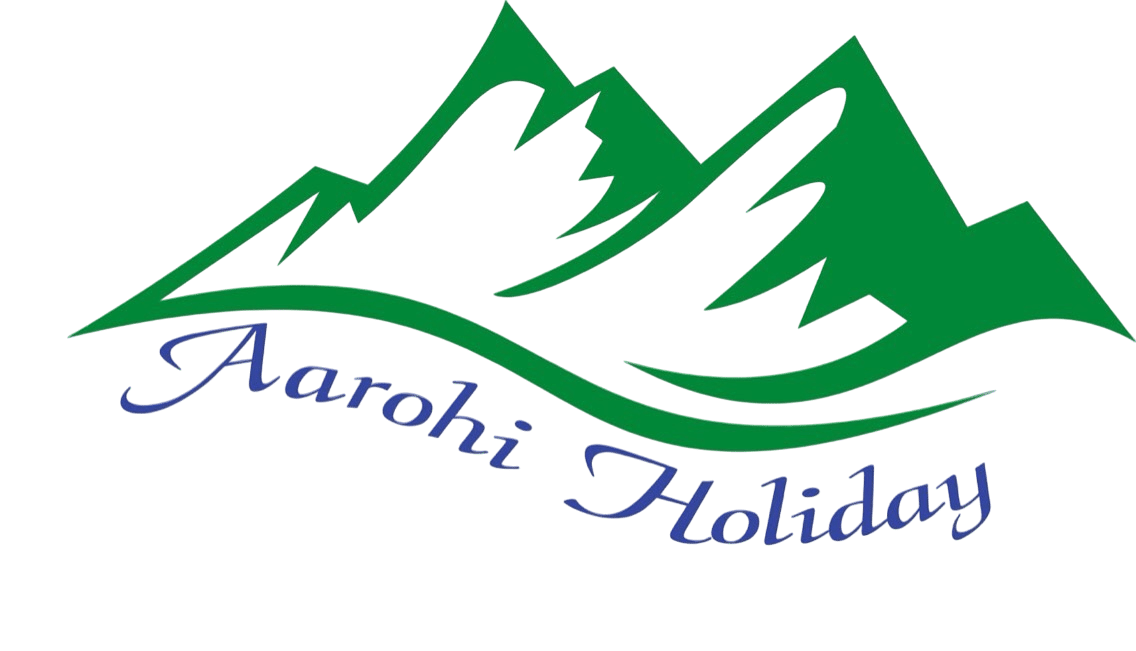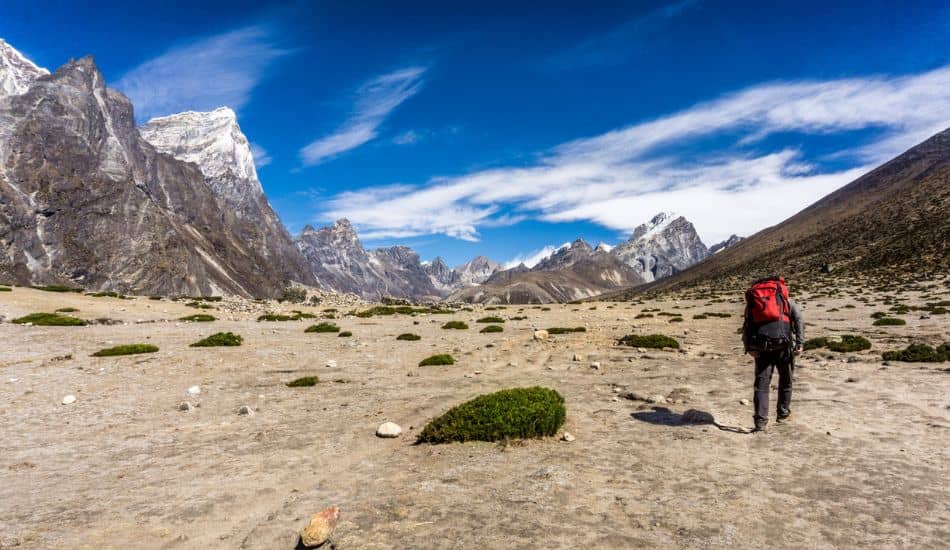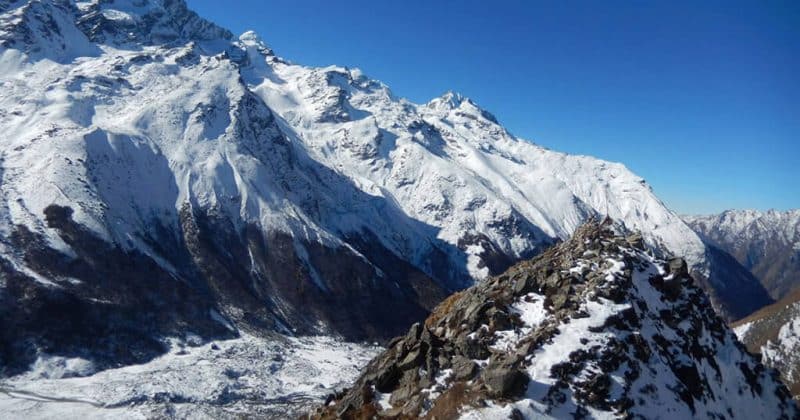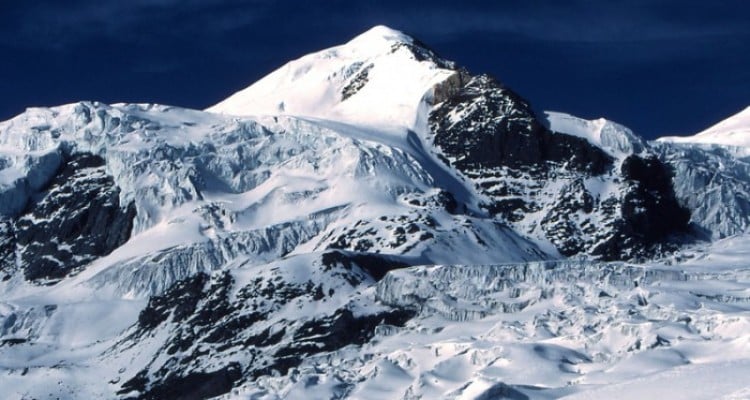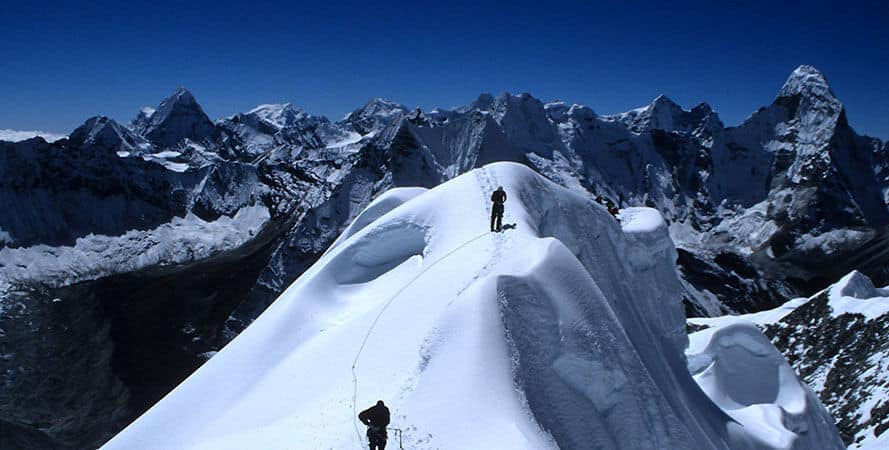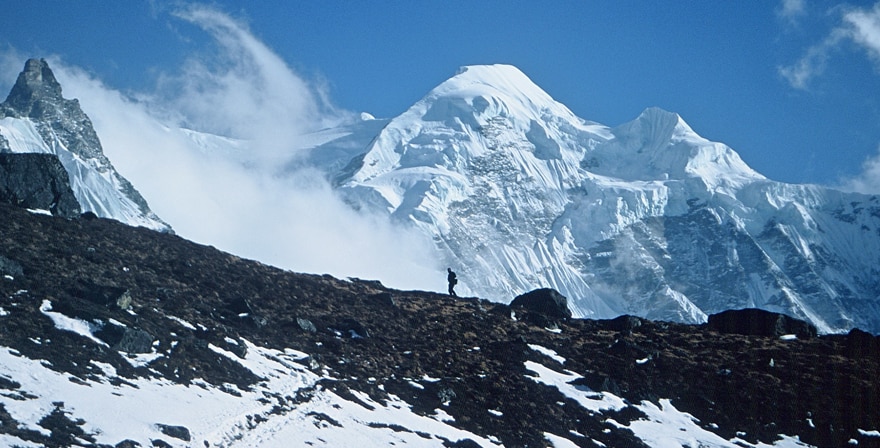US $2650
Chulu East Peak Climbing Overview
Chulu East Peak Climbing (6,584m) is located in the Manang Valley. It is considered one of the best Annapurna trekking circuits in Nepal, offering panoramic views of the mountains, diverse scenes of flora and fauna, a variety of cultures, and the customs of the people inhabiting the route. Chulu East Peak brings you across spectacular and popular settlements such as Marpha, the kingdom of apples. Alongside an unstable slope, you will also reach Thorung La Pass at (5,416m). The peak is surrounded by Dhaulagiri, Manaslu, Glacier Dome, Gangapurna, and others. On Chulu East Peak, you can also experience the culture and lifestyles of managed and ethnic groups. The peak offers an exquisite view of nearly the entire Annapurna and Manaslu Himalayas within a 360-degree angle, with its limit extending to Kali Gandaki (5,447m). The best seasons for Chulu East Peak Climbing are from March to May (spring) and from September to November (autumn).
We begin our 21-day trip in Kathmandu with visits to UNESCO World Heritage sites before heading to one of the prime attractions for thousands of tourists in Nepal: Chulu East Peak Climbing. we will always do everything possible for you to have the most comfortable, safe, and exciting journey of your life.
Rout To Chulu East Peak Climbing

The adventure to Chulu East Peak begins with a scenic drive from Kathmandu to Besisahar, the traditional starting point of the Annapurna Circuit. From Besisahar, the trail ascends through lush subtropical forests, terraced fields, and charming Gurung and Manangi villages, gradually entering the Marsyangdi River valley. As trekkers ascend, they pass through Dharapani, Chame, and Pisang, where dramatic views of Annapurna II, III, IV, and Lamjung Himal dominate the skyline. The route continues towards the picturesque village of Manang (3,540m), a key acclimatization stop nestled below towering peaks and glaciers. Here, trekkers can explore local monasteries and enjoy short acclimatization hikes, such as to Gangapurna Lake or the Ice Lake.
From Manang, the trail veers northeast towards Yak Kharka and then onward to Chulu East Base Camp, situated at around 5,300 meters. The approach to Base Camp traverses alpine meadows, high pastures, and rugged moraines, offering breathtaking views of the surrounding Annapurna giants. After setting up Base Camp, climbers establish a High Camp (around 5,500 meters) to prepare for the summit push. The ascent of Chulu East Peak involves crossing glaciated terrain, ascending steep snow slopes, and navigating rocky ridges. Although the climb requires basic mountaineering skills, including the use of crampons, ice axe, and ropes, it is considered achievable for fit trekkers with prior high-altitude experience.
The summit of Chulu East Peak (6,584m) rewards climbers with a spectacular panorama of the entire Annapurna range, including Gangapurna, Tilicho Peak, Manaslu, and beyond towards Tibet. After the summit, climbers descend to Base Camp and retrace their steps through Yak Kharka and Manang, before rejoining the Annapurna Circuit trail towards Thorong Phedi. Many climbers choose to continue over the iconic Thorong La Pass (5,416m) and descend to Muktinath, adding a rich cultural and scenic dimension to the journey. The adventure concludes with a descent to Jomsom and a scenic flight back to Pokhara, followed by a return to Kathmandu. Chulu East Peak Climbing offers an exhilarating combination of trekking, mountaineering, and cultural immersion in one of Nepal’s most stunning alpine landscapes.
Why Choose Us for Your Chulu East Peak Climbing
Chulu East Peak Climbing is a challenging and rewarding adventure in the Annapurna region, offering breathtaking views and a true Himalayan mountaineering experience. Here is why travelers choose Aarohi Holiday for this journey:
- We are a government-registered operator with in-depth knowledge of the Annapurna region and the Chulu East climbing route.
- Our professional guides and Sherpas are skilled, supportive, and focused on your safety and success.
- After booking, we provide online briefings with gear advice, training tips, and a detailed itinerary to fully prepare you.
- We offer a reliable booking process with flexible payment options.
- Private airport pick-up and drop-off are included to ensure smooth arrivals and departures.
- You receive round-the-clock support by phone and email during your trip.
- We keep costs transparent with no hidden fees and provide complimentary medical kits and luggage storage.
- Traveling with us helps support local communities and promotes sustainable tourism in remote mountain villages.
Chulu East Peak Climbing – 2025/26 Group & Private Options Available
Chulu East Peak Climbing is an exciting adventure in the Annapurna region, combining scenic trekking with the challenge of summiting a 6,019 meter peak. It is ideal for trekkers who want to experience both high-altitude trekking and a technical Himalayan climb. We offer fixed departure group climbs as well as fully guided private options tailored to your preferences.
Group climbs (2–12 people) allow you to share the adventure with other climbers, while private climbs let you set your own pace, receive personalized support, and maintain a flexible schedule. Bookings are now open for our 2025 departures, and early reservations for 2026 are available to secure your preferred dates and prepare confidently for your climb.
Chulu East Peak Climbing Alternatives
Looking for other exciting climbs in the Annapurna region? Chulu West Peak Climbing offers a more technical and challenging ascent with breathtaking views of the Annapurna and Dhaulagiri ranges. Pisang Peak Climbing provides a rewarding trekking peak experience, ideal for climbers seeking a mix of high-altitude trekking and a Himalayan summit. Both are excellent options for those looking for an adventure beyond Chulu East Peak.
